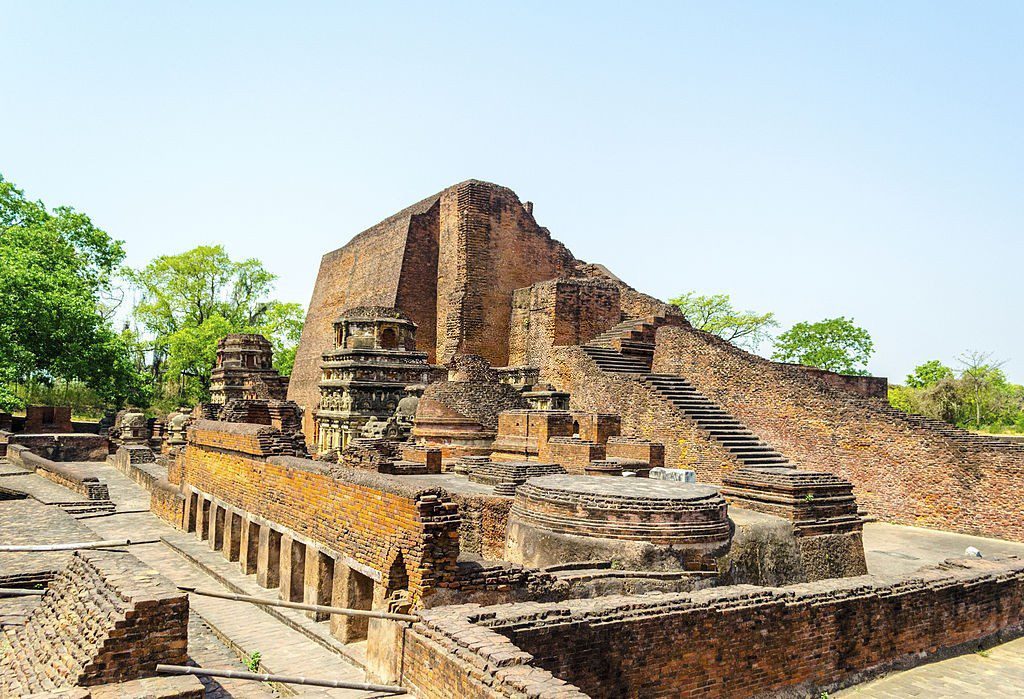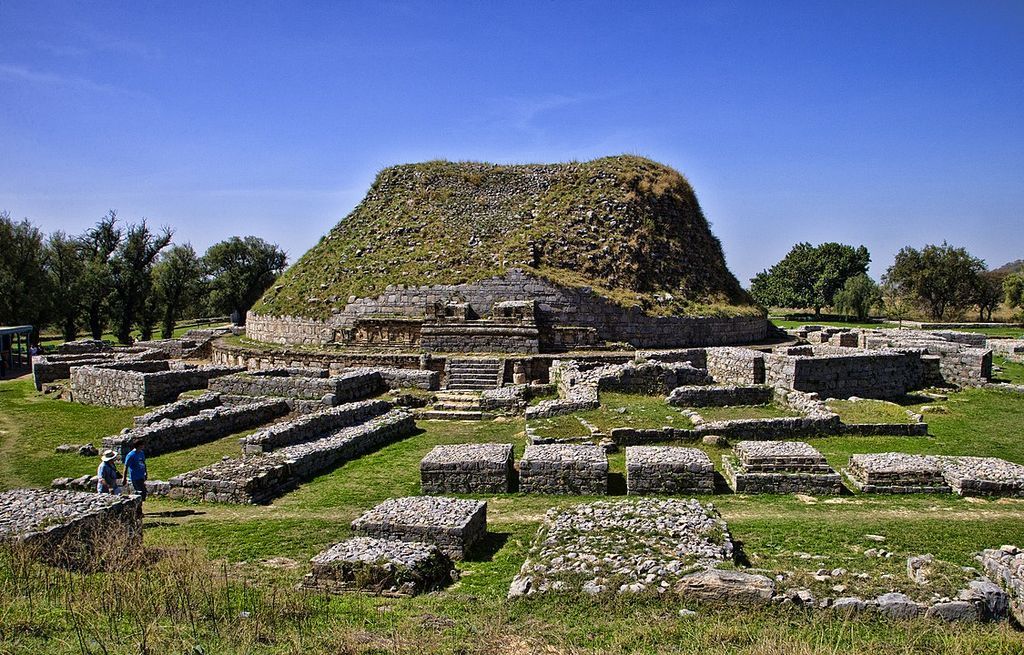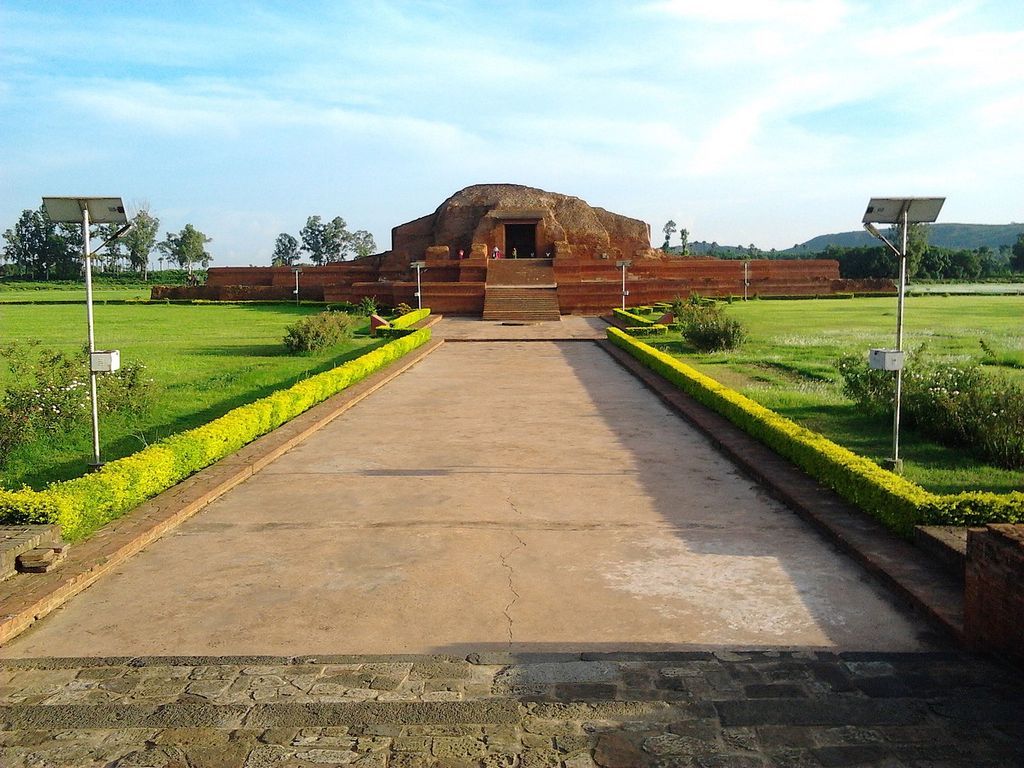One of the core strengths of Indian civilization has been its never-ending drive to seeking knowledge and wisdom. This characteristic is seeing a slight downfall in recent times but not for the ancient ancestors, the ability to question and debate to arrive at facts was paramount.
This is clearly evident by well-established institutions of arts and learning in ancient India, home to the world’s oldest universities that were the center for higher education and cultural exchange in ancient times.
Logic and debate were notably important for India’s philosophical traditions. This love for debate and presentation of arguments from ancient times formed the root of democracy, which has survived even today right down to the village level.
Few universities in India even enrolled students from foreign lands and they participated in the quest for knowledge and wisdom. In the ancient world warfare and the art of war were essential for a civilization to thrive.
However, ancient India also believed in the importance of knowledge and education for a civilization to progress. They firmly held that peaceful co-existence can also be achieved through debate and logic.
Be ready to be amazed by the ancient Indian universities listed below that were truly much ahead of their time.
1. Nalanda University (425 AD – 1205 AD)

By far the most complete description we have today is of the Nalanda University in the ancient kingdom of Magadha thanks to the writings (7th Century CE) of Chinese travelers Xuanzang and Yijing.
Students came to one of the most prestigious learning centers in the world from far across to learn from the highly acclaimed teachers at the university.
The locations from which students traveled for education include Tibet, China, Korea, and Central Asia.
As many as 100 lectures were held in a day, and according to Yijing, students did not want to miss even a minute of these.
It wasn’t easy to gain admission into Nalanda University, to be accepted as a pupil of renowned gurus required great knowledge and competence.
According to the accounts of Xuanzang, Nalanda had a very tough entrance examination.
Only about 20% of the students who applied got through it. Foreign students had the hardest time in passing the admission test unless they were “deeply versed in old and modern learning.”
And yet, the university had as many as 8,500 students and 1,500 teachers, which speaks volumes about the fame and popularity of the institution in ancient times.
[rb_related title=”You May Also Like” total=”2″]
The age of students at the time of admission has been estimated to be about 20. There was even a network of schools that helped students to prepare for getting into Nalanda, which sounds uncannily similar to today’s coaching centers for IIT-JEE and other competitive examinations.
The students of Nalanda were looked up to as models all over India and highly respected, according to Xuanzang. One had to merely mention one’s Nalanda antecedents to be bestowed with admiration.
Taking advantage of this, some people even faked their Nalanda degrees! By the seventh century, there were four other universities in Bihar, all largely inspired by Nalanda.
They worked in collaboration, and by the tenth century one of them—Vikramshila —emerged as a serious competitor to Nalanda in higher education.
A wide range of subjects were taught in Nalanda — religions and secular, philosophical and practical, sciences and arts — it was the most complete education available at that time, says Xuanzang who himself studied there for five years.
He had studied Yoga shastra under the highest authority of the time – Silabhadra.
He also studied Nyaya, Hetuvidya, Shabdavidya, and the Sanskrit grammar of Panini. There is an interesting side story to this. Xuanzang has written that when he visited Kanchi, he met several monks from Ceylon.
When he told them about his impending visit to Ceylon, they said it was futile because he would not meet anyone superior to them in knowledge. Intrigued, Xuanzang began to discuss yoga texts with them.
To his disappointment, he found their explanations not as good as the one he got from Professor Silabhadra at Nalanda University.
Nalanda mainly flourished under the patronage of the Gupta Empire as well as emperors such as Harsha and later, the rulers of the Pala Empire.
Various endowments were made by kings, which led to the construction of impressive buildings, majestic in their size with richly adorned towers and turrets that gave the look of hill-tops, and observatories that were covered by mist in the mornings.
According to Xuanzang, there was a lofty wall all around the grounds and a big gate, which opened into the university with a big main hall from which separated eight other halls.
He describes that the upper rooms towered above the clouds and from their windows, one could see the wind and clouds producing new forms, and from the soaring eaves (overhang from the roof), splendid sunsets and moonlit glories could be seen.
He wrote in his memoirs: “All the outside courts in which are the priests’ chambers are of four stages. The stages have dragon projections, and colored eaves, pearl-red pillars carved and ornamented, richly adorned balustrades, while the roofs are covered with tiles that reflect the light in a thousand shades.”
A similar description is given in the Nalanda Stone Inscription of Yasovarman of the 8th century stating that the rows of monasteries had their series of summits (Shikhara-Shreni) licking the clouds (Ambudhara).
The grounds had deep, translucent ponds bearing blue lotuses interspersed with the deep red Kanaka flower, while Amra groves spread their shade all around.
The massive external grandeur of the buildings is said to have contrasted with the delicate artistic beauty of the interior.
You May Also Like: 15 Amazing Facts About Ancient India You Probably Didn’t Know Before Now
2. Takshashila (Taxila) University (600 BC – 500 AD)

Located in modern-day Rawalpindi in Pakistan, Takshashila or Taxila once upon a time was known as the intellectual capital of India.
This might surprise you but Takshashila flourished several centuries before the Universities of Alexandria and Constantinople even existed.
Takshashila became a melting pot of cultures as students used to come there from far lands. Many influential Indian scholars composed their epoch-making work at Takshila.
It is believed that Chanakya wrote Arthashastra – an ancient Indian treatise on economic policy and military strategy – during his teaching tenure at Takshashila University. Maharishi Charak also composed his medical treatise Charak Samhita there.
The revered Sanskrit scholar and grammarian Panini also taught at Takshashila. He produced his best work called Ashtadhyayi (eight chapters) there. It was a complex, rule-based grammar book of Sanskrit that survives in its entirety to this day.
The dark times befell the university when Kushanas – a central Asian tribe – invaded Takshashila and ruled over it until 250 AD. They added little to the stature of this great seat of learning. As a result, the education system at Takshashila started to recede.
The final blow came when Hunas – nomads from northwest China -conquered the region around 500 AD and snuffed out the beacon that had once illuminated the minds of many.
You May Also Like: Golden Age of India: How was it like living in a city during the times of the Gupta Empire?
3. Vikramshila University (800 AD – 1203 AD)

The Indian state of Magadha (now Bihar) was home to another great seat of learning. Vikramshila along with Nalanda formed the era’s powerful duo of knowledge and education.
Vikramshila University was built by King Dharampala in the 8th century, again as a rival of Nalanda, but it also collaborated with it. The alumni of this university are said to have practically built the culture and civilization of Tibet.
Unlike other ancient places of learning, Vikramshila opened its gates to only those who wished to become Buddhist monks. After attaining their education, these monks traveled to far-off lands to spread Buddhism.
It is stated that Vikramshila campus had six different colleges with each one imparting a different specialization.
Subjects such as Sanskrit grammar, Logic, Metaphysics, Philosophy, Buddist Tantra and Ritualism were in vogue.
As per the accounts of Tibetan pilgrim monks, it was at Vikramshila where the culture of awarding degrees and recognition first started.
The titles of Mahapandit and Pandit were accorded as per merit to those who completed their education. The extraordinary alums had their portraits painted on the walls of the university.
Vikramshila met the same fate as Nalanda in 1203 AD.In many ways, the fate of both universities was entwined.
In addition to being exceptional universities, both enjoyed great royal patronage in their time, both had astonishing libraries, both were ransacked and burnt to the ground by the same Turkic invader, Bakhtiyar Khilji.
4. Valabhi University in Gujarat (600 AD – 1200 AD)
The Valabhi University was an important centre of Buddhist learning and championed the cause of Hinayana Buddhism between 600-1200 AD.
The center for learning in Gujarat was famous for its teaching of secular subjects. Students were enrolled from all over the country. Like the modern campus placements the students of the ancient university got placed into high government positions after graduating.
This ancient Indian seat of learning was situated in Vallabhi (modern-day Bhavnagar) in Gujrat state of Western India.
Like other universities of that time, Vallabhi also benefited from royal endowments. The lineage of Maitrak dynasty became the patrons of the university and helped in building its infrastructure.
By the middle of the 7th century, Vallabhi had become famous for teaching Buddhist philosophy and Vedic sciences.
The other main subjects taught at the university were Statesmanship, Economics, Book-keeping, Business and Agriculture.
The University continued to function until 12th century despite being at the centre of the Arab invasions around late 8th century.
It can be deduced that the attacks weakened the influence of patron kings and their financial ability to support the great institution.
For some time, the university was considered to be a rival to Nalanda, in Bihar, in the field of education. In September 2017, the Indian central government started to consider a proposal to revive the ancient university’s all things even the university
You May Also Like: Top 10 Amazing Spiritual Places in India for a Journey into Self-Discovery
5. Nagarjuna Vidyapeeth (600 AD)
Named after famous Buddhist philosopher, Nagarjuna Vidyapeeth was situated in South India on the banks of the Krishna river.
Archaeological evidence suggests that the university and its library flourished in the 7th century.
Its library housed on the top floor of the five story building had an enormous collection of the Buddhist philosophy, science and medicine.
The enormity of the collection is borne out by the fact that it not only had works on the Buddhist literature, but also on several branches of scientific knowledge, such as, Botany, Geography, Mineralogy and Medicine.
It was a great attraction for scholars from other ancient Indian universities and from other countries, like, China, Burma, and Ceylon.
You May Also Like: Indian History Timeline-Indian History Explained with Simplicity
6. Mithila (Mythical to Medieval)
Mithila specialized in logic and scientific subjects. According to historian John Keay, it was so strict in guarding its knowledge that students were not allowed to take any books outside or even copies of lectures. They could only leave with their diplomas or degrees.
The monopoly of Mithila University was broken by the Nadia University, which also specialized in logic.
The story goes that Vasudeva Sarvabhauma in the 15th century, studied at Mithila University but when he was prevented from copying the texts, he committed to memory, the whole of Tattva Chintamani and the metrical part of Kusumanjali.
Then, in Nadia, he wrote down the texts he had memorized and founded a new academy of logic. Nadia soon outrivaled Mithila by producing better scholars.
7. Ujjaini University
One university that simply stands out for its academic output in astronomy and mathematics is Ujjaini (also called Ujjain), which was equipped with an elaborate observatory and stood on the zero meridians of longitude those times.
Had imperialistic Europe not assumed control of the scientific discourse of the world, perhaps Ujjain, not Greenwich would have been today’s prime meridian.
Brahmagupta was among the most celebrated astronomers of Ujjaini university who continued the tradition of Varahamihira and made significant contributions to mathematics.
He worked on trigonometrical formulae, quadratic equations, area of a cyclic quadrilateral, arithmetic progression, and improved Aryabhata’s sine tables.
In his treatise Brahmasphutasiddhanta, he was the first to treat zero as a number in its own right, rather than as simply a placeholder digit. He established basic mathematical rules for dealing with zero such as 1 + 0 = 1; 1 – 0 = 1; and 1 × 0 = 0. (6) Brahmagupta’s works reached the court of Khalifa al-Mansur in Baghdad and played a pathbreaking role in making the Arabs conversant with Indian astronomy and mathematics.
Later, this knowledge was transmitted to Europe. The tradition of Brahmagupta was continued by Bhaskara II, also called Bhaskaracharya who became the head of the astronomical observatory at Ujjaini.
He wrote the famous Siddhantasiromani and Lilavati. In the New World Encyclopedia, J. J. O’Connor and E. F. Robertson are quoted to have said in their paper for the School of Mathematics and Statistics that Bhaskaracharya “reached an understanding of the number systems and solving equations, which was not to be achieved in Europe for several centuries.”
He was hailed as the first mathematician to write a work with full and systematic use of the decimal number system.
Bhaskaracharya is also considered the founder of differential calculus, who applied it centuries before Newton and Leibniz. He too had a profound impact on Islamic mathematicians just like the earlier acharyas of Ujjaini.
8. Jagaddala University (1084 AD – 1207 AD)
The Jaggadala Vihara in Varendrabhumi (now Bangladesh) was also an important centre of learning in the early 11th century. It was established by the king Kampala, who ruled from 1084 to 1130 A.D.
According to Tibetan works, it was at Jagaddala where many sacred Sanskrit texts were either translated in the Tibetan language.
Not much is known about why the university ceased its operations, but evidence indicates that Jagaddala may have also fallen to an invasion some time in the early 13th century.
9. Kanthalloor University (1000 AD – 1300 AD)
Recent excavations near Valiyasalai in the Southern Indian state of Kerela revealed the existence of an illustrious ancient university.
Known as the Nalanda of South, the Kanthalloor Shala was once a famous center of knowledge and due to the quality of education provided by this ancient university, it attracted scholars from other parts of India and Sri Lanka.
What set Kanthalloor apart from other ancient Indian universities of that era was the diversity in the subjects it offered.
At Kanthalloor, students were taught subjects such as Vedas, Astrology, Chemistry, Goldsmithy, Medicine, Music and even Atheism and Magic which until then were considered taboo in other universities.



